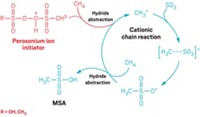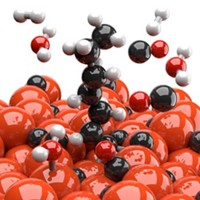Advertisement
Grab your lab coat. Let's get started
Welcome!
Welcome!
Create an account below to get 6 C&EN articles per month, receive newsletters and more - all free.
It seems this is your first time logging in online. Please enter the following information to continue.
As an ACS member you automatically get access to this site. All we need is few more details to create your reading experience.
Not you? Sign in with a different account.
Not you? Sign in with a different account.
ERROR 1
ERROR 1
ERROR 2
ERROR 2
ERROR 2
ERROR 2
ERROR 2
Password and Confirm password must match.
If you have an ACS member number, please enter it here so we can link this account to your membership. (optional)
ERROR 2
ACS values your privacy. By submitting your information, you are gaining access to C&EN and subscribing to our weekly newsletter. We use the information you provide to make your reading experience better, and we will never sell your data to third party members.
Environment
Captured Carbon Dioxide Could Work As A Green Industrial Solvent
Impurities in waste carbon dioxide wouldn’t be an impediment for supercritical fluid-based reactions
by Stephen K. Ritter
September 12, 2011
| A version of this story appeared in
Volume 89, Issue 37
The few impurities in carbon dioxide captured from burning coal and natural gas should not preclude using the gas to generate supercritical CO2 for use as an industrial solvent, according to a team of European chemists (Green Chem., DOI: 10.1039/c1gc15503b). Although successfully used to replace organic solvents in a variety of lab-scale reactions, only a few supercritical CO2 processes have been commercialized because of the high cost of pressurizing CO2. Carbon capture and storage, which is being implemented to cut CO2 emissions, now provides a continuous, cost-effective source of pressurized CO2. But how impurities in captured CO2 might affect chemical processes presented a question. Martyn Poliakoff, Michael W. George, and Trevor C. Drage of the University of Nottingham, in England, and coworkers have answered it by testing a discontinued commercial process—hydrogenation of isophorone to make trimethylcyclohexanone—in supercritical CO2 laced with N2, CO, or H2O to simulate probable contaminants. They found that N2 introduces modest phase changes and that CO and H2O reduce catalyst activity, but that activity can be maintained by increasing the reaction temperature. None of the impurities cause insuperable problems, the researchers note, and they believe their findings could help reboot industrial supercritical CO2 reactions.





Join the conversation
Contact the reporter
Submit a Letter to the Editor for publication
Engage with us on Twitter